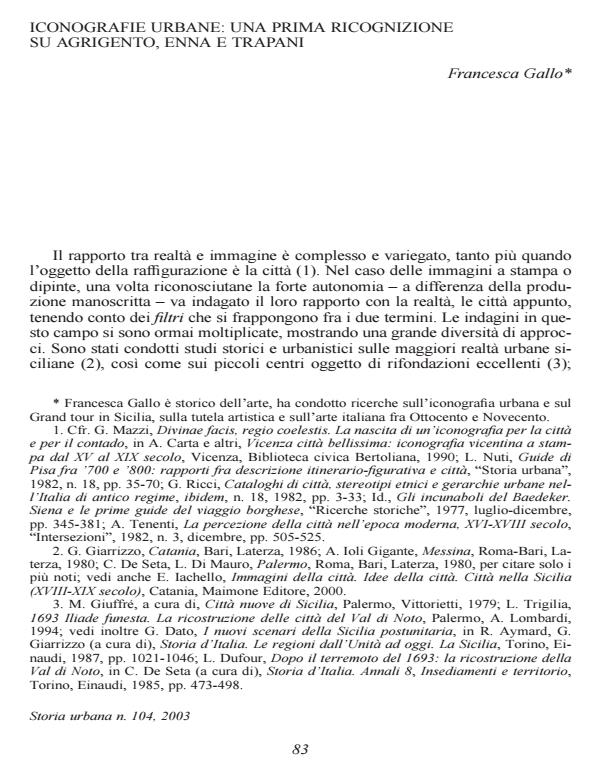Iconografie urbane: una prima ricognizione su Agrigento, Enna e Trapani
Journal title STORIA URBANA
Author/s Francesca Gallo
Publishing Year 2005 Issue 2003/104
Language Italian Pages 14 P. File size 320 KB
DOI
DOI is like a bar code for intellectual property: to have more infomation
click here
Below, you can see the article first page
If you want to buy this article in PDF format, you can do it, following the instructions to buy download credits

FrancoAngeli is member of Publishers International Linking Association, Inc (PILA), a not-for-profit association which run the CrossRef service enabling links to and from online scholarly content.
The way in which the towns of Enna, Agrigento and Trapani were considered in modern iconography was quite different. Enna was not included in the 16th century Atlas of towns and was only of minor interest for the Grand Tour. On the contrary, Agrigento, although quite well known between the 15th and 16th centuries, due to its importance as a wheat producer, can be found in the iconographical inventories only in the late 1700’s, as European travellers had, in the meantime, extended the range of their wanderings southwards in search of antiquities. As a flourishing emporium between the Peninsula and Africa, Trapani begins to be featured in collections of portraits of towns at the end of the 1500’s. It then gained great notoriety over the following centuries, just as its political and economical role in the kingdom was becoming marginal. Only with the growing phenomenon of travel in Sicily do urban portraits finally manifest significant changes in the choice of the perspective and of the issues to be highlighted.
Francesca Gallo, Iconografie urbane: una prima ricognizione su Agrigento, Enna e Trapani in "STORIA URBANA " 104/2003, pp , DOI: